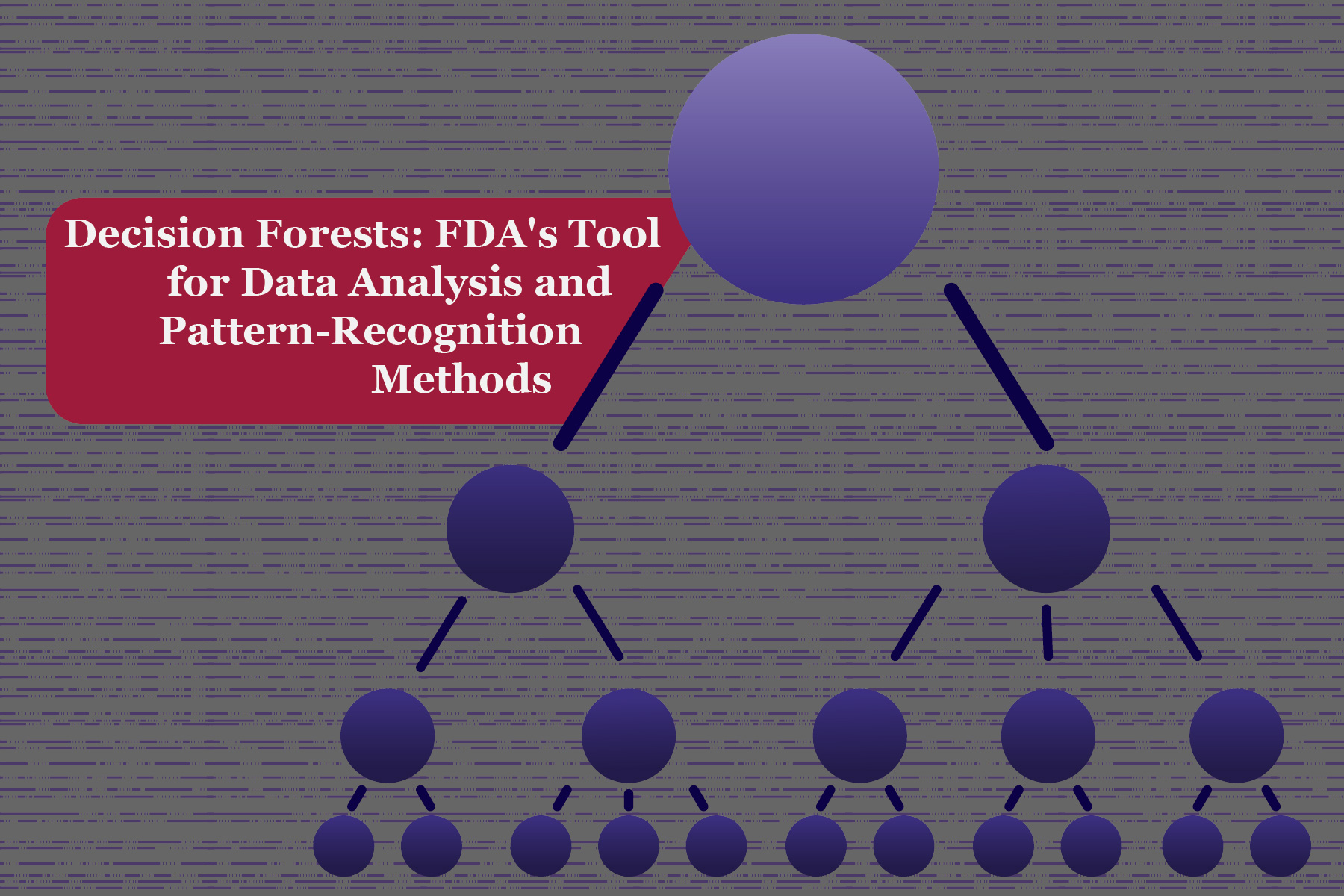Decision Forests (DFs) are one of the most aggressive data classifying AI algorithms. A decision forest comprises several decision trees that perform the task of data classification based on certain conditions. Each tree functions as an individual classifier or a predictor. Decision forest combines the predictions by training and testing multiple trees and in the end, the final prediction is based on the collective prediction or the integrated computing power of all trees, offering an aggressive and accurate decision-making AI-based tool.
FDA uses Decision Forests for deriving explanatory analysis with co-relations and pattern recognition by analyzing massive datasets including DNA microarray and Structure-Activity Relation (SAR) data.1 The DF trees are initially trained with specific sets of inputs and outputs. For the new data, the trees predict outputs based on previously learned combination of inputs or “patterns”. Example: Predicting an unstable drug where the trees are supplied with distinctive chemical compounds and their behaviors as inputs.2 With such abilities, several computational steps are eliminated, significantly improving system performance.
Training a large number of decision trees with an iterative learning process, the system cross-validates new inputs against the trained data, contributing deeply to the overall accuracy. Being an AI algorithm, it is indeed adaptive which means the selected AI model keeps changing based on requirements. When embedded with a medical device or if used as an AI-based software tool in a medical environment, the algorithm needs to comply with FDA regulations for satisfying essential quality, safety, and efficiency standards.
Currently, applications or medical devices integrated with AI must go through some sort of premarket submission depending on their categorized class and state (State defines if the device is substantially equivalent or a new device). Surely, FDA is engaging closely with AI/ ML engineers to develop a flexible framework that would help them along with device manufacturers avoid frequent submissions as AI-based tools undergo frequent changes. Initially, the proposed framework defines the class of the device using the state of the healthcare and significance of the information. Also, the framework states that the potential or future requirements can be documented in early submissions. Hence, submissions would be required only if the changes fall outside the previously documented requirements or if the changes deeply affect safety, quality, and efficiency. The potentially documented design requirements in the early stages are called the software pre-specifications (SPS).
Within the same framework, FDA states every AI-based software or medical device should go through Clinical Trials or the software verification and validation phase in which the AI target output is tested against the required functionality or software requirements.3 With the design and requirements documented, the device or the application is ready for the premarket submission.
To sum up, Decision Forests are the best-suited tools for analyses of big data sets. Also, they provide powerful mechanisms for creating and deriving data-driven patterns. Indeed, if used in medical applications, they should be FDA compliant before they are released in the market. Do you have a medical or a software device that includes Decision Forests or other AI-based algorithms that need FDA approval? Our regulatory experts at EMMA International can help ensure your product is compliant with the FDA regulatory requirements. Contact us at 248-987-4497 or info@emmainternational.com for additional information.
1FDA (November 2018) Decision Forest Novel pattern-recognition method which can be used to analyze DNA microarray, SELDI-TOF MS, and SAR data. Retrieved on 09/20/2020 from https://www.fda.gov/science-research/bioinformatics-tools/decision-forest.
2Meyer, J. G., Liu, S., Miller, I. J., Coon, J. J., & Gitter, A. (2019). Learning drug functions from chemical structures with convolutional neural networks and random forests. Journal of chemical information and modeling, 59(10), 4438-4449.
3FDA (January 2020) Artificial Intelligence and Machine Learning in Software as a Medical Device. Retrieved on 09/20/2020 from https://www.fda.gov/science-research/bioinformatics-tools/decision-forest.





